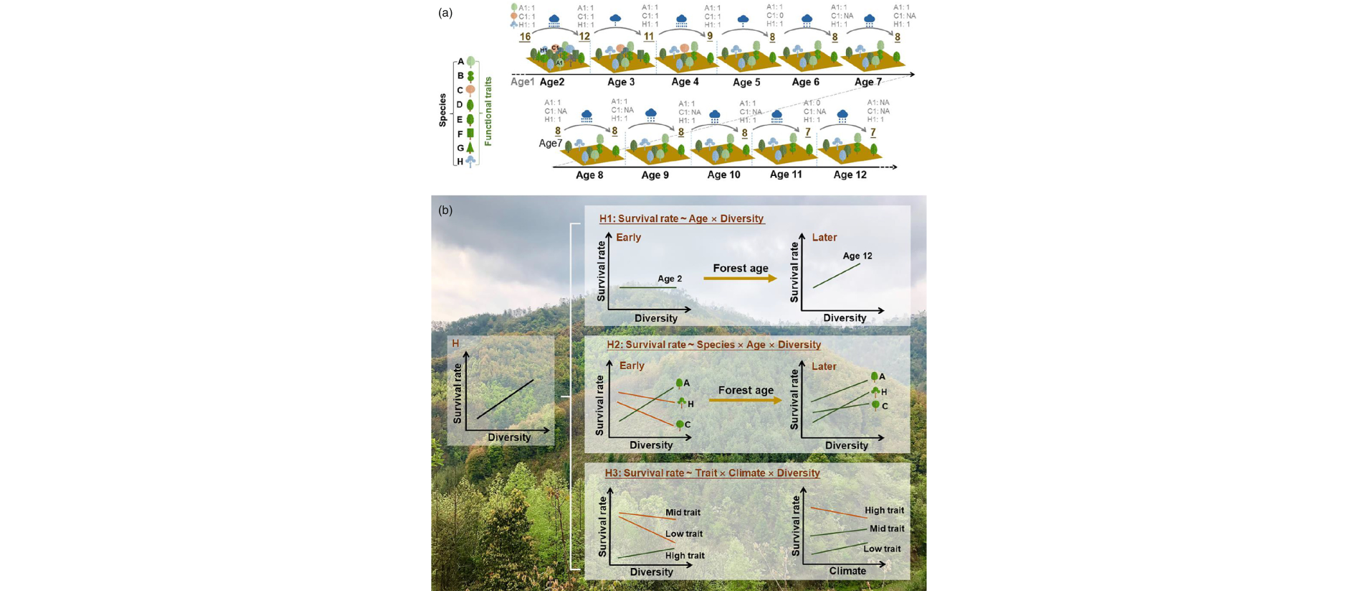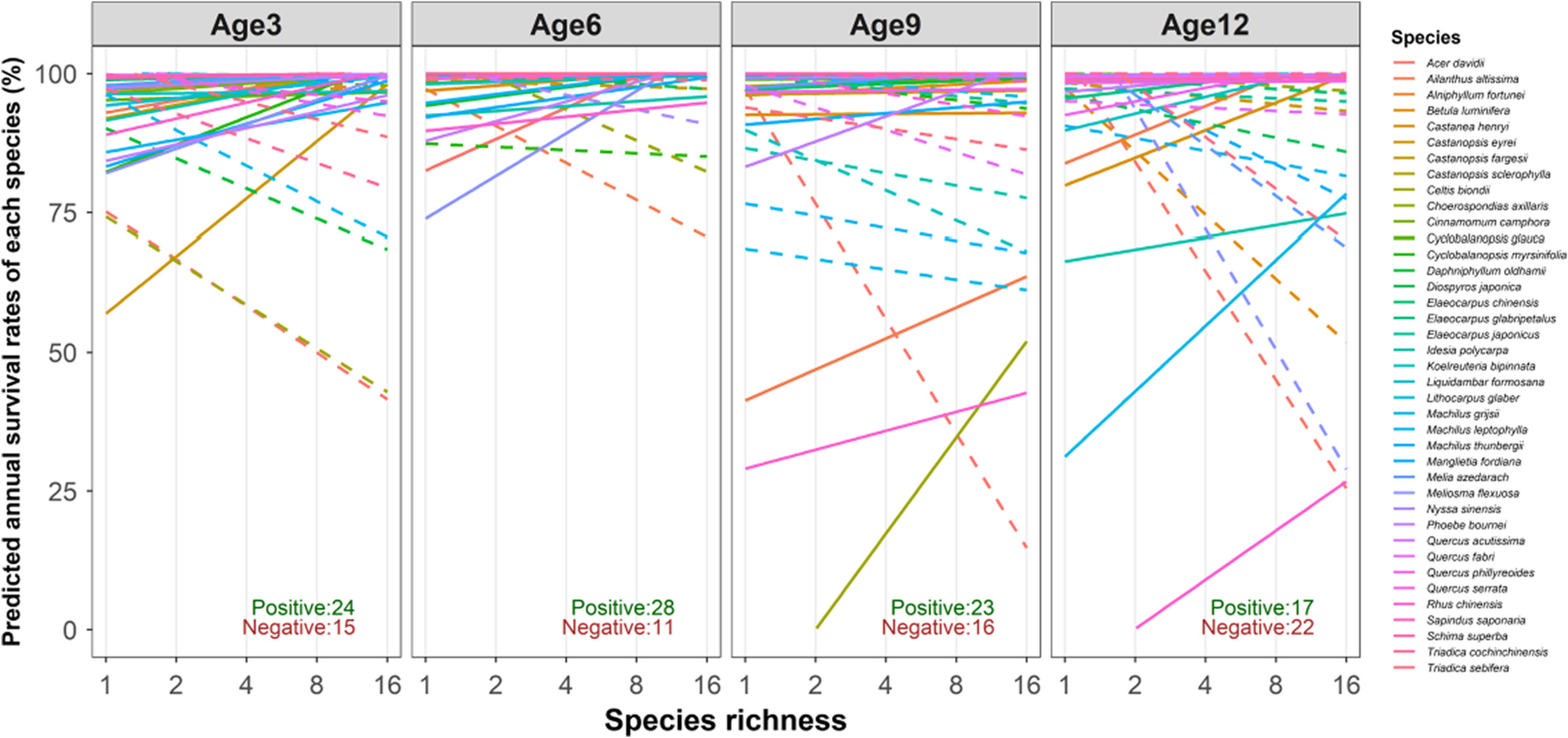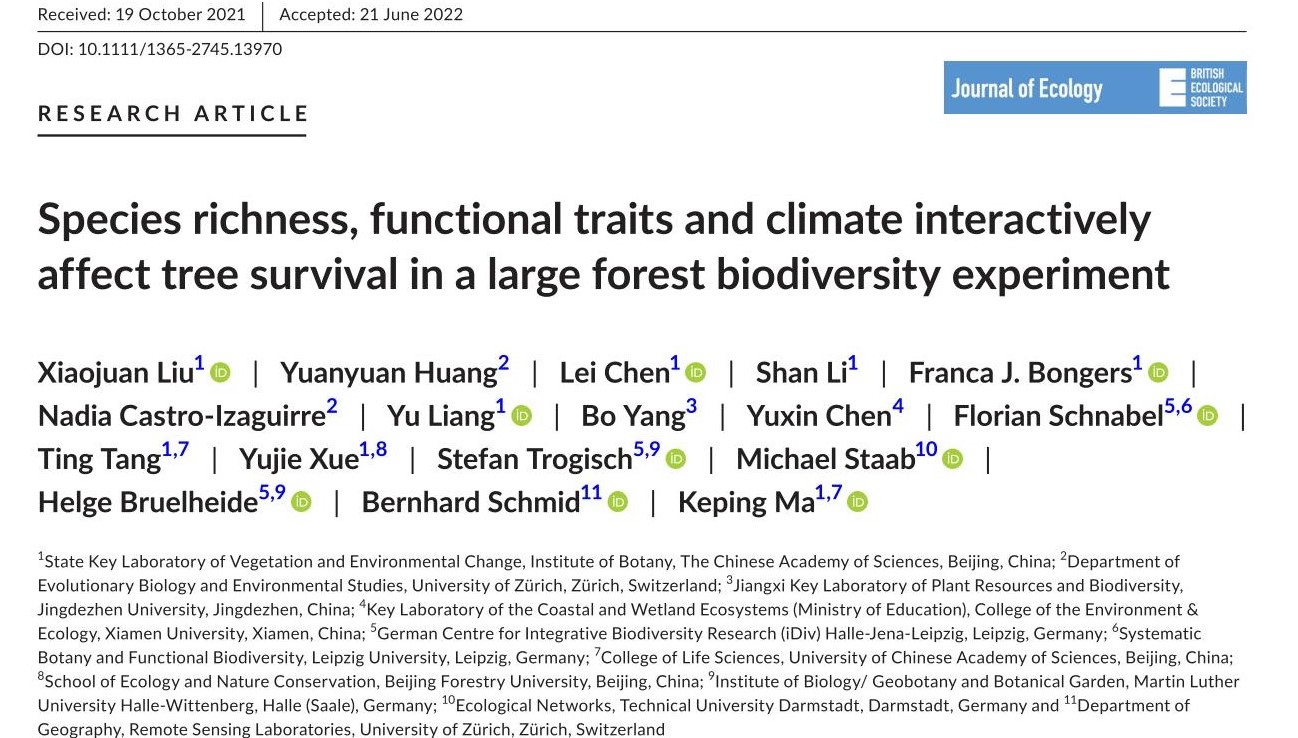Tree survival affects forest biodiversity, structure and functioning. However, little is known about feedback effects of biodiversity on survival and its dependence on functional traits and interannual climatic variability.
With an individual-based dataset from a large subtropical forest biodiversity experiment, we evaluated how species richness, functional traits and time-dependent covariates affected annual tree survival rates from age 3–12 (years) after planting 39 species across a diversity gradient from 1 to 2, 4, 8 and 16 tree species.
We found that overall survival rates marginally increased with diversity at the plot level, with large variation among plots within diversity levels. Significant variation among species in survival responses to diversity and changes in these responses with age were related to species functional traits and climatic conditions. Generally, survival rates of conservative species (evergreen, late-successional species with thick leaves and high carbon to nitrogen ratio but low specific leaf area, leaf phosphorus and hydraulic conductivity) increased with diversity, age and yearly precipitation, whereas acquisitive species showed opposite responses.
Synthesis. Our results indicate that interactions between diversity, species functional traits and yearly climatic conditions can balance survival among species in diverse forests. Planting mixtures of species that differ in functional traits in afforestation projects may lead to a positive feedback loop where biodiversity maintains biodiversity, together with its previously reported beneficial effects on ecosystem functioning.

Figure 1 Conceptual figure.

Figure 2 Diversity effects on annual survival rate from age 3–12 (years) after the experimental forest stands were established. The grey line is the average survival rate across all ages. The x-axis was log2-transformed.

Figure 3 Annual diversity–survival rate relationships for each of the 39 species of the experiment for four distinct ages.

Figure 4 (a) Principal component analysis (PCA) biplot for the nine functional traits defining two gradients of plant strategies; and significant functional trait (PCs)-dependent relationships between (b) species richness and (c) precipitation and annual survival rates.
Literature:
Xiaojuan Liu, Yuanyuan Huang, Lei Chen, Shan Li, Franca J. Bongers, Nadia Castro‐Izaguirre, Yu Liang, Bo Yang, Yuxin Chen, Florian Schnabel, Ting Tang, Yujie Xue, Stefan Trogisch, Michael Staab, Helge Bruelheide, Bernhard Schmid* and Keping Ma*. 2022. Species richness, functional traits and climate interactively affect tree survival in a large forest biodiversity experiment. Journal of Ecology. 110(10): 2522-2531. https://doi.org/10.1111/1365-2745.13970.

